1760-1811 3rd Duke of Grafton
Augustus Henry Fitzroy, son of Lord Augustus Fitzroy, was born on 28th September 1735 and was educated at Westminster School and Peterhouse College, Cambridge. Between 1747 and 1757 he liked to be known as the Earl of Euston, and he became an MP in 1756, representing the Whigs in Boroughbridge. When his father died in 1757 he inherited the title the 3rd Duke of Grafton, while on 14th October 1768 he became Prime Minister at just 33 years of age. It is likely that the Duke of Grafton owned the land, adjacent to the present day Cadland Stables, on which a structure on the site of the present day Wroughton House was built, for it is shown on John Chapman's Maps of Newmarket, 1768, as probably belonging to the Duke of Grafton. At some point in time, probably in 1771, when Richard Vernon took on a lease of a Newmarket property from the Jockey Club, the Duke also purchased Cadland House and Stables, although they were still not known by that name then. What is certain is that he was the owner in 1787, because his name is recorded on a map of Newmarket which was produced in that year. However, he also owned a stud in Suffolk at the ancestral home, Euston Hall. His racing colours, sky blue with black cap, were carried to victory in 5 English Classics, including Derby wins in 1802 with Tyrant, in 1809 with Pope, and the next year with Whalebone. The Duke died on 14th March 1811, the title and his estate passing to his son George Henry Fitzroy.
1802 Epsom Derby TYRANT 7/1 (SR 1984) owned by 3rd Duke of Grafton, trained by Robert Robson and ridden by Frank Buckle
1804 Epsom Oaks PELISSE 4/5 fav (SR 1995) owned by 3rd Duke of Grafton, trained by Robert Robson and ridden by Bill Clift
1808 Epsom Oaks MOREL 3/1 (SR 1954) owned by 3rd Duke of Grafton, trained by Robert Robson and ridden by Bill Clift
1809 Epsom Derby POPE 20/1 (SR 1969) owned by 3rd Duke of Grafton, trained by Robert Robson and ridden by Tom Goodisson
1810 Epsom Derby WHALEBONE 2/1 (SR 2077) owned by 3rd Duke of Grafton, trained by Robert Robson and ridden by Bill Clift
For over 4 centuries racing has been staged in Newmarket, but how have the racecourses evolved from an initial starting point at Fleam Dyke Pumping Station, some 8 miles from the town, with a winning post barely 200 metres from the town centre, into two world recognized, excellent racecourses and a universal acceptance that Newmarket is the Headquarters of racing?
To access an interactive racecourse map showing over 50 individually named racecourses CLICK HERE. The map will enable you to:-
1. Determine when extended races over 8 miles, 6 miles and 4 miles began to be replaced by the courses now visited by thousands annually;
2. Consider how the challenge of crossing the Devil's Dyke was overcome;
3. Contemplate why the town no longer has a steeplechase course despite having at least 5 courses during the past 2 centuries;
4. Examine the practicalities of having up to 48 starting posts and winning posts;
5. Appreciate that it was not financially viable to have an open racecourse spread widely across the heath, with a finishing post barely 200 metres from the town centre;
6. Research how and why the Cambridgeshire Handicap has been contested over 3 different courses.
NOTE: The map does not make mention of 2 particular courses:-
(i) Sefton Course (also known as the Cambridge Road Course)
Source: 1970 Raceform. Used from 1959 to 1975.
(ii) New Circular Course
The Circular Handicap was run on Friday 29th October 1875 on the New Circular Course of about two miles.
Source: London Standard (30th October 1875): ''the horses started near the Turn of the Lands, ran back way of the Cambridgeshire Course towards the Ditch, and afterwards proceeded down the side of the Tan Gallop, and turned into the Rowley Mile near the Bretby Stakes starting post, finishing at the stand at the end of the flat. Except in the hollow near the Cambridgeshire start the runners should have been visible all the way if the sky had been bright and clear''.
Another report hoped that the Circular Handicap would become a feature in future programmes, as it would be contested in front of the new grandstand which would be completed in about a year and would be able to accommodate thousands.
(I am grateful to Tim Cox for bringing attention to these 2 courses.)
Enjoy researching the intriguing history of Newmarket and its many racecourses.

1811-1827 4th Duke of Grafton
George Henry Fitzroy, son of the 3rd Duke of Grafton, was born in London on 14th January 1760 and was educated at Harrow School and Trinity College, Cambridge. He became the MP for Thetford in 1782, two years later becoming MP for Cambridge University. He inherited the title of 4th Duke of Grafton on the death of his father on 14th March 1811, also inheriting his father's love of racing. It is also presumed that he inherited Wroughton House Stables and Cadland House and Stables, for he continued to employ the same trainer as his father, Robert Robson. The pair enjoyed much success, including 18 English Classics between 1813 and 1827, with further successes following after that date. It is possible he sold what was to become Wroughton House and Cadland House and Stables on, or before, 1828 to the 5th Duke of Rutland, John Henry Manners, because in that year the Duke of Rutland won the 2000 Guineas and Derby, albeit after a run-off, with his horse Cadland, and subsequently named the stables in honour of that horse. However, the Duke of Rutland also owned nearby Cheveley Park which had been in the family for some time, and where the Duke bred four Classic winners.
1828-1857 5th Duke of Rutland
John Henry Manners, eldest son of Charles Manners, the 4th Duke of Rutland, was born at Knightsbridge on 4th January 1778. He was an extensive landowner, but his passion was for horse racing, and he became a successful owner and breeder. He inherited the title 5th Duke of Rutland on the death of his father in 1787, and later became Lord Lieutenant of Leicestershire. The fanily also owned the Cheveley Park Estate. Cheveley Castle was built in 1341 by Sir John de Pultenay. The estate later came into the ownership of Sir Henry Jermyn in 1650 and it was he who built the first Cheveley Park mansion. In the early years of the 18th century, between 1730 and 1740, the Estate was taken over by the Duke of Somerset, but by 1750 the Dukes of Rutland had gained ownership. It was the 5th Duke of Rutland who established Cheveley Park as his stud, and it was he who planted a tree lined avenue as a lasting memorial to his wife, naming it the Duchess Drive. At the Stud he bred 4 Classic winners, the first of which was the 1811 Epsom Oaks winner Sorcery. Three years later he won the Oaks again with the home-bred filly Medora. At some point, possibly as early as 1827, he purchased the land on which the present day Wroughton House and Cadland House Stables were built, owned at the time by the Duke of Grafton, which are ideally situated at the foot of Warren Hill. In 1828 the Duke of Rutland won the 2000 Guineas and Derby with another home-bred colt, Cadland, although Cadland only won the Derby outright in a run-off, having dead-heated first time around. In theory, he is the only horse in history to have won the Epsom Derby twice. Sometime after that victory it is believed that the trainers house, the present day Wroughton House and Stables, and the additional stables and House he purchased were named Cadland in honour of the horses two Classic wins. The Duke died at his Belvoir Castle home on 20th January 1857.
January 1859-October 1870 Christopher Green
Christopher Green, born at Bilney in Norfolk in 1820, rode with his father's pack from a very early age, developing into one of the best steeplechase riders of his day. He rode Joe Osborne's Abd-el-Kader to win the 1850 Grand National, and for much of the 1850s he was based at Littleport in Cambridgeshire. In January 1859 he left Littleport for Newmarket, taking with him his string of 7 horses, where he took over premises in Station Road which were the future Wroughton House, renting 16 of the boxes. In 1859 he won a second Grand National on Half Caste, which he also trained for Mr Willoughby, and his friends helped him celebrate the victory by subscribing towards a massive silver cup. In 1866 Lord Poulett was thought to be building a yard at Droxford for him, but Green remained at Wroughton House, Newmarket for four more years, owning the winners of the Newmarket Town Plate from 1864 to 1867. Latterly there he was largely reduced to training for himself, and in October 1870 he finally took up his appointment as private trainer to Lord Poulett and his associates at Droxford.
1850 Grand National at Aintree ABD-EL-KADER 50/1, owned and trained by Joe Osborne, ridden by Chris Green
1859 Grand National at Aintree HALF CASTE 7/1 owned by Mr Willoughby, trained and ridden by Chris Green
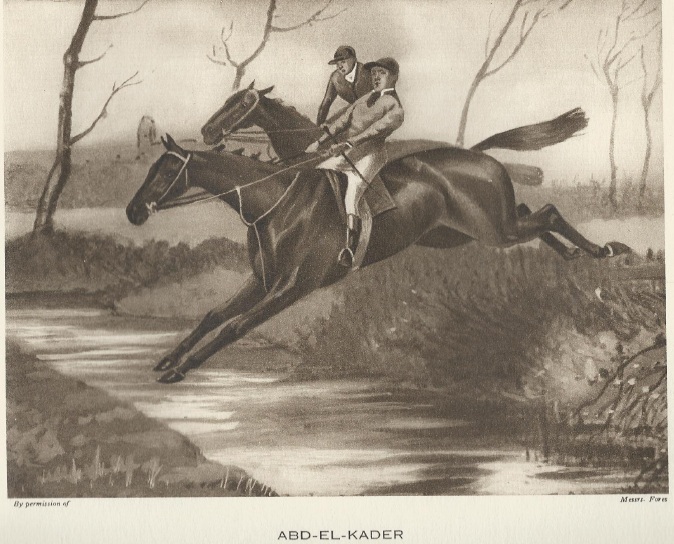
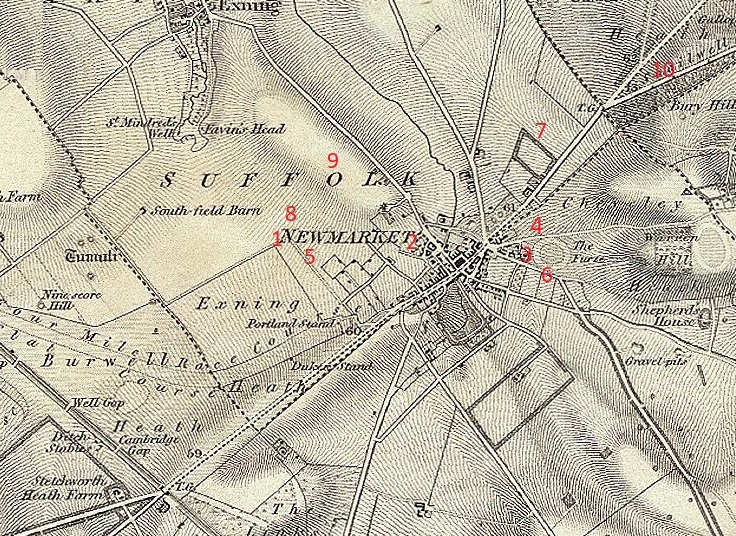
1857-August 1887 Charles Blanton
When the Duke of Rutland died in January 1857 it is likely that all of the land, on which the present day Wroughton House and Cadland House stables are built, was sold. It is known that Charles Blanton took over the racing establishment on what was then known as Upper Station Road, although today it is known as Old Station road, although at that point in time the House was not known as Wroughton House. Charles was born in 1823 and went on to train successfully at his Station road base for almost 30 years. He trained for some very prominent owners, including the Duke of Hamilton, Sir John Astley, Sir Wroth Lethbridge and Prince Soltykoff. He had a very successful period between 1874 and 1881, winning the Royal Hunt Cup with Lowlander, the 1875 Cesarewitch with Duke of Parma, the Goodwood Cup with New Holland, the Grand Prix de Paris with Thurio, and the 1880 Hardwicke Stales with Exeter which he also owned.
1874 Royal Hunt Cup LOWLANDER 4/1 jt fav owned by Mr H Bird, trained by Charles Blanton and ridden by Constable
1874 Goodwood Stakes SCAMP owned by Sir John Astley, trained by Charles Blanton and ridden by Tom Cannon
1874 Brighton Stakes SCAMP owned by Sir John Astley, trained by Charles Blanton and ridden by Tom Cannon
1875 Cesarewitch Handicap DUKE OF PARMA owned by Prince Soltykoff, trained by Charles Blanton and ridden by Tom Cannon
1876 Goodwood Cup NEW HOLLAND owned by Prince Soltykoff, trained by Charles Blanton and ridden by Tom Cannon snr
1876 Lennox Stakes LOWLANDER 9/100 owned by Mr H Bird, trained by Charles Blanton and ridden by H Custance
1878 Grand Prix de Paris THURIO owned by Prince Soltykoff, trained by Charles Blanton and ridden by Tom Cannon
1876 Great Metropolitan Handicap NEW HOLLAND owned by Prince Soltykoff, trained by Charles Blanton and ridden by Tom Cannon
1879 Alexandra Plate THURIO owned by Prince Soltykoff, trained by Charles Blanton and ridden by Tom Cannon
1880 Hardwicke Stakes EXETER 4/1 owned and trained by Charles Blanton and ridden by Tom Cannon
1880 St Leger ROBERT THE DEVIL (SR 2040) 4/1 owned by Charles Brewer and Charles Blanton, trained by Charles Blanton and ridden by Tom Cannon
1880 Sussex Stakes MASK evens fav owned by Prince Soltykoff, trained by Charles Blanton and ridden by Tom Cannon
1880 Cesarewitch ROBERT THE DEVIL 17/2 owned by Charles Brewer and Charles Blanton, trained by Charles Blanton and ridden by Tom Cannon
1880 Cambridgeshire LUCETTA 100/6 owned by Prince Soltykoff, trained by Charles Blanton and ridden by Graves
1880 Champion Stakes ROBERT THE DEVIL 11/10 fav owned by Charles Brewer and Charles Blanton, trained by Charles Blanton and ridden by Tom Cannon
1881 Alexandra Plate ROBERT THE DEVIL owned by Charles Brewer and Charles Blanton, trained by Charles Blanton and ridden by Tom Cannon
1881 Ascot Gold Cup ROBERT THE DEVIL owned by Charles Brewer and Charles Blanton, trained by Charles Blanton and ridden by Tom Cannon
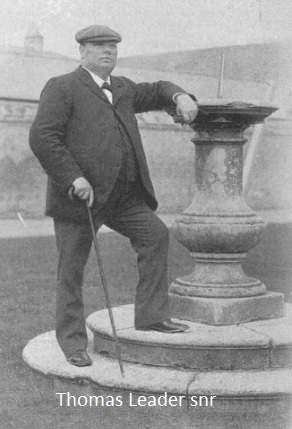
September 1887-February 1920 Tom Leader senior
Thomas Leader, son of Stephen and Mary (nee Cook) was born on 16th April 1847 in Wroughton, Wiltshire. When he was 11 years-old he joined the stables of Jack Carter, a rich industrialist based in Wroughton. After his schooling he worked as a groom in Ely, Llandaff, Wales, for William Sheward Cartwright before returning to join the former stables of Jack Carter which had been taken over by 'Black Tom' Oliver, a former jockey, who trained at Fairwater Stables in the village. When Tom Oliver died in January 1874 Tom Leader took his place as trainer. Tom enjoyed very early success in his training career, guiding George Frederick (SR 2014), named after Queen Victoria's grandson, to win the 1874 Epsom Derby for William Cartwright when ridden by Harry Custance. The colt had been unplaced as a 2-year-old in the Biennial Stakes at York before winning the Municipal Stakes, Boscawen Stakes and Triennial Produce Stakes. He won the Newmarket Stakes in 1874 prior to his Derby success. Tom married Rose Jane Matthews in 1878 and the pair had 5 sons, the first, Thomas Richard, named after Tom, the second after George Frederick. Other sons, who also became trainers, were Colledge, also born at Wroughton, and Stephen and Harvey who were both born in Newmarket. Although William Cartwright died on 2nd May 1880, Tom continued to train in Wroughton, but in September 1887, after the death of Charles Blanton, Tom and family moved to Blanton's racing establishment on Upper Station road, naming it Wroughton House Stables in memory of the village where he was born and raised. Tom retired from training in 1915 and died on 5th February 1920 aged 72.
1874 Epsom Derby GEORGE FREDERICK (SR 2014) 9/1 owned by Mr W S Cartwright, trained by Tom Leader senior and ridden by Harry Custance
1915 Chippenham Plate at Newmarket KING PRIAM 4/7 fav owned by Mr G H Williamson, trained by Tom Leader snr and ridden by Morny Wing
George Frederick Leader was born into a highly successful racing family in 1881 and rode as a jockey until his weight became a problem. He then acted as assistant trainer to his uncle, Mr W Leader, followed by a stint as assistant to Francis Lambton. He joined the American trainer Andrew Jack Joyner in 1909 as assistant at Balaton Lodge during a particularly successful period for the stables. When Joyner retuned to America George took charge at Savile House in July 1913. He was then private trainer to Mr J Musker for a further year. He served during the War, but straight after the War he temporarily took charge at Wroughton House when Ted Leader became too ill. However, by February 1920 Tom's son joined Wroughton, and by September 1920 George had moved to Warren House.

February 1920-June 1945 Tom Leader junior
Thomas Richard Leader, the eldest son of Tom Leader senior, was born in Wroughton, Wiltshire, in 1879 and travelled with the Leader family to Newmarket in the autumn of 1887. However, he returned to work in stables at Wroughton, where his son Thomas Edward Leader, nicknamed Ted, was born on 9th May 1902. He continued to train in Wroughton in the period leading up to, and immediately after, the First World War, but in December 1919 he travelled to Newmarket to assist his father at Wroughton House Stables when his father became ill and too old to carry out his work as he would wish to. His father, Tom senior, died in February 1920 leaving Thomas Richard to take charge of Wroughton House and Stables. Tom was a multi-purpose trainer, most famously training Sprig to win the 1927 Grand Nation when ridden by son Ted, and repeating the victory in the 1929 Grand National with 100/1 winner Gregalach ridden by Rupert Everett. He continued to train at Wroughton House until his death on 24th June 1945 aged 66. He left the stables to his younger brother Harvey, who had trained at Beechwood Stables, Exning, Shalfleet Stables and Bedford Lodge Stables.
1929 Grand National GREGALACH 100/1 owned by Mrs Margaret Gemmell, trained by Tom Leader and ridden by Robert (Bob) Everett

June 1945-December 1950 Harvey Leader, Thomas Waugh
Harvey Cliff Leader, youngest son of Thomas Leader senior, was born at Wroughton House, Newmarket on 16th September 1892. He enjoyed a successful career as a jockey before launching his own training career in 1918, moving to at Beechwood Stables, Exning in November 1924. He gained almost immediate success when training Caligula (SR 1870) to land the 1920 St Leger, before training Diomedes to win the 1925 King's Stand Stakes, Nunthorpe Stakes and July Cup, repeating his July Cup success in 1926. Also, in that year, and to show his flexibility, Harvey guided Jack Horner 25/1 to victory in the 1926 Grand National for owner Mr A Schwartz. He was left Wroughton House Stables by his brother Tom, but after 5 years in charge at Wroughton House, ably assisted by Tom Waugh, Harvey decided to go travelling in December 1950, starting with a holiday in Switzerland. He left Tom Waugh to look after the training at Wroughton House, although it was only in 1956 that Tom returned to Wroughton to take full control of the stables. Harvey Leader did return to training duties, albeit at Shalfleet Stables, where he was assisted by Gavin Pritchard Gordon. Harvey retired in 1971, leaving Pritchard Gordon to take over at Shalfleet, and Harvey died in Newmarket in 1972.
1946 City of Birmingham Handicap ARROMANCHES 7/4 trained by Harvey Leader and ridden by Gordon Richards
1946 Winkfield Stakes SUNNY DAY 10/11 fav trained by Harvey Leader and ridden by Gordon Richards
1951-1955 J F (Jack) Watts
The Watts family have a long history in racing, John Watts rode 19 Classic winners from 1883 to 1897, his son J E Watts won two Classics, J F (Jack) Watts trained the 1964 St Leger winner Indiana, while his son Bill Watts began training in Newmarket in 1968. J F (Jack) Watts jnr trained at Stanley House for Lord Derby after replacing the retired George Colling in 1956, having trained at Wroughton House stables since the early 1950s, having previously starting his training career in 1950 at St Albans House. At the end of the 1962 season he left Stanley House, moving to Machell Place in 1964, training a stable of 50 horses.
1956-1966 Tom Waugh
Tom Waugh junior joined Harvey Leader at Wroughton House Stables as his assistant having previously assisted Frank and Fred Butters who were his cousins. In December 1950 Harvey decided to go travelling to Switzerland, leaving Tom in charge at Wroughton House. At some stage in the early 1950s Jack Watts trained at Wroughton House, but after the retirement of George Colling from Stanley House Stables, Jack was enticed away from Wroughton House, leaving Tom Waugh to take over once again. He was rewarded with a Classic success when Privy Counsellor (SR 1942) won the 1962 2000 Guineas for Mr Gerald Glover. After his spell at Wroughton House at the end of the Second World War, Tom Waugh junior moved to Sefton Lodge to train for Jim Joel in 1967, replacing Ted Leader who had travelled in the opposite direction.
1962 2000 Guineas PRIVY COUNSELLOR 100/6 (SR 1942) owned by Gerald Glover, trained by Tom Waugh junior and ridden by Bill Rickaby
1967-1971 Thomas Edward Leader
Thomas Edward Leader, son of racehorse trainer Thomas and his wife Rose, was born on 9th May 1902 at Wroughton, Wiltshire and developed into a very accomplished jockey; was champion National Hunt jockey in the 1925-26 season, although the highlight of his time as a jockey was partnering Sprig to success in the 1927 Grand National. He turned to the training ranks in the early 1930s, serving his training apprenticeship in 1931 and 1932 with his uncle Harvey Leader, before taking full charge of Machell Place in 1933 when his other uncle, Colledge Leader, moved to take up a position as private trainer to Lord Derby at Stanley House Stables. Ted enjoyed early success as a trainer when Wychwood Abbot won the 1934 Cambridgeshire. He remained in charge at Machell Place until the outbreak of the Second World War, where he saw active service in the RAF. At the end of the War he returned to Machell Place Stables, remaining in charge until his move to Sefton Lodge in 1952. He remained there for 15 years, returning to Wroughton House at the end of the 1966 season, a stable where both his grandfather, father and uncle Harvey had trained. He and Harvey both retired from training in October 1971, Harvey dying in Newmarket the next year.
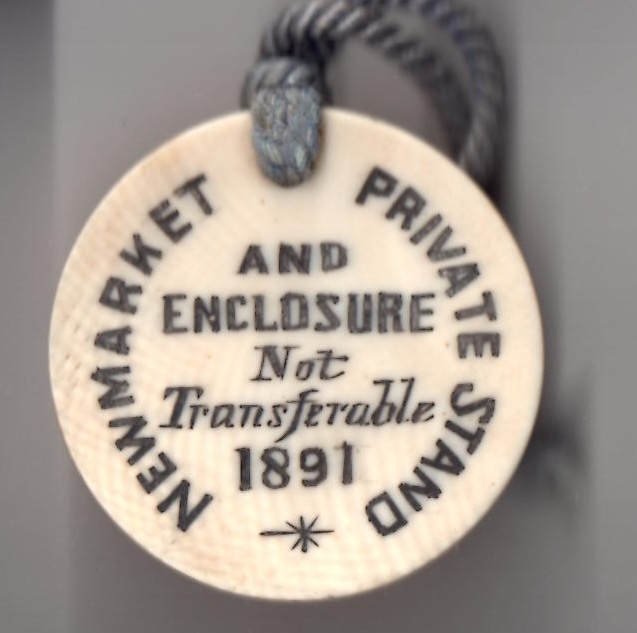
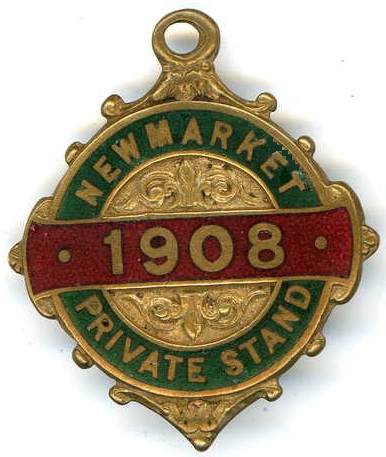
December 1971-1975 Tim Darling
After the retirement of Ted Leader in October 1971, Tim Darling, 27 year-old son of Claude Darling, a Darlington solicitor who had horses with Neville Crump and George Beeby, purchased Wroughton House Stables. Darling was a member of the Zetland Hunt and also an accomplished point-to-point rider who learnt his trade assisting Ken Cundell for 4 years at his Compton Stables, before moving to assist Geoff Barling at Newmarket for 5 years. When he purchased Wroughton House Stables it had 34 boxes, although he began with an initial string of 12 horses. One of his best horses whilst at Wroughton House was King Midas who won the 1973 Golden Fleece Stakes at Thirsk and the Shifnal Handicap at Wolverhampton in 1974.
1972 Marcus Beresford Stakes at Sandown PRECIOUS DROPS 8/1 trained by Tim Darling and ridden by Willie Carson
1973 Golden Fleece Stakes at Thirsk KING MIDAS 13/2 trained by Tim Darling and ridden by George Oldroyd
1974 Shifnal Handicap at Wolverhampton KING MIDAS 5/1 trained by Tim Darling and ridden by George Duffield
1993-March 2001 Jeff Pearce
Jeffrey Norman Pearce was born at Thornbury in Worcestershire on 6th October 1947 to working class parents who bought him a pony which changed his life and set him on the path of becoming a jockey. He entered the world of racing as an apprentice to Toby Balding and had his first ride in public in a novice chase at Towcester on 7th October 1967. It was not a successful beginning as the horse refused. It was to be almost 5 years before he rode his first winner, Fascination at Plumpton on 21st February 1972, the first of about 90 career wins, but in 1981 he suffered one fall too many on Merchant Tubbs at Southwell and sustained career ending injuries. He turned his hand to training, serving as assistant to Frankie Durr for 5 years at Fitzroy House Stables in Newmarket before taking out a licence in his own name in 1986. He launched his training career at Sackville House Stables and eked out a living for the next 6 years. In 1993 Jim Furlong, president of the Racehorse Owners' Association, purchased Wroughton House and asked Pearce to train 9 horses for him. In 1998 Jeff enjoyed his best season when he trained a 50 strong string and saddled 43 winners. However, in May 2000 Pearce was involved in a road traffic incident which went to court in March 2001, and ultimately led to him being unable to train for up to 4 years.
March 2001-March 2003 Lydia Pearce
While Jeff was unable to train for a lengthy spell, his wife Lydia, a champion amateur rider, took over the licence until Jeff became available again in March 2003.
2003-2011 Jeff Pearce
Jeff was in a position to resume his training duties in March 2003 and continued to train alongside Lydia until 2011 when she, once again, took over the training duties at Wroughton House Stables.
2011-2019 Lydia Pearce
Lydia took charge of the stables for a considerable period assisted, in part, by son Simon who was also an aspiring jockey.
October 2016-November 2018 Tom Clover
Tom Clover has been around racehorses and a racing environment all of his life. As soon as he was allowed to do so he contested point to point races and, after completing his statutory school education, he enrolled at the Royal Agricultural College at Cirencester where he gained a diploma. Tom launched his training career at the tender age of 30 towards the end of the 2016 racing season, having spent an invaluable and educational 6 years as assistant to David Simcock at Trillium Place, on Birdcage Walk, acknowledging that David and Jennie Simcock were great role models to follow. Prior to his time with the Simcock's he had been assistant to Charlie Longsden, experiencing life in a National Hunt Stable. He took over the 25 box Wroughton House Stables, ideally located at the foot of the Warren Hill gallops, in October 2016 and was ably supported by his partner Jackie Jarvis, daughter of the Prix de L'Arc de Triomphe winning trainer, and former master of Kremlin House stables, Michael Jarvis. The pair celebrated their first winner, aptly named Declarationoflove on 8th May 2017. In November 2018 he transferred to Saville House Stables and later transferred to Kremlin House Stables before returning to the White Yard, Wroughton House Stables.
2017 British Stallion Studs EBF Novice Stakes at Windsor DECLARATIONOFLOVE (5/1) owned by Ian Barratt, Stephen Short and Adam Signy, trained by Tom Clover and ridden by Andrea Atzeni
2019-present Simon Pearce
Simon Pearce, son of Jeff and Lydia Pearce, was brought up in a horse racing environment at Wroughton House, and though he was an accomplished rider he did not have his first ride in public until he was 21. He rode for 10 years as an apprentice before turning professional, although he enjoyed a limited number of winners once he had turned professional, riding Luna Magic to success over a mile at Lingfield. He also worked on his BHA training qualification and, to gain further experience, spent some time in Santa Anita, California at the stables of Richard Baltas in Pomona. Aged just 32 he took charge of Wroughton House Stables in 2019.
ROBERT THE DEVIL (1880 St Leger, Cesarewitch, Champion Stakes)
PRIVY COUNSELLOR (1962 2000 Guineas)
LOWLANDER (1874 Royal Hunt Cup, 1876 Lennox Stakes)
NEW HOLLAND (1876 Goodwood Cup)
SPRIG (1927 Grand National)



